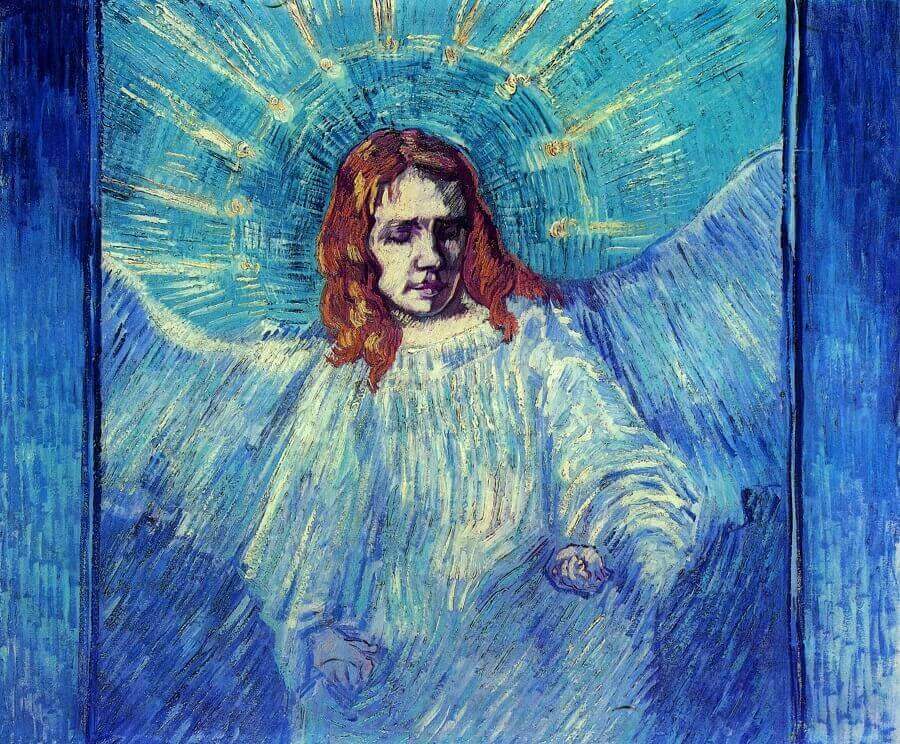The Angel (after Rembrandt) by Vincent van Gogh

Of all the Old Masters, it was Rembrandt that Van Gogh most admired and who had the greatest effect on his work. In 1885 Van Gogh traveled to Amsterdam specifically to visit the galleries and museums, and while there his affinity for Rembrandt's paintings was reaffirmed. To Van Gogh Rembrandt's paintings provided an unsurpassable model of coloring and realism, which like the romantic coloring of Eugene Delacroix and Adolphe Monticelli (1824-86) was to influence the young Dutchman.
He painted this Angel after Rembrandt at a time when he was making copies of prints by other artists. He had been in the asylum at Saint-Remy for some months and was suffering greatly from his mental illness, which had recently included episodes of distressing religious manifestations. Religion had formed a large part of Van Gogh's life, and it was a subject that he approached with his own form of spirituality, transferring religious feelings of 'awakening' and light' for example to his symbolic depictions of glowing stars and the sun. Here he has combined a naturalistic head in the manner of Rembrandt with a shimmering transcendental coloring, and the whole is rather disturbing and unresolved.




















